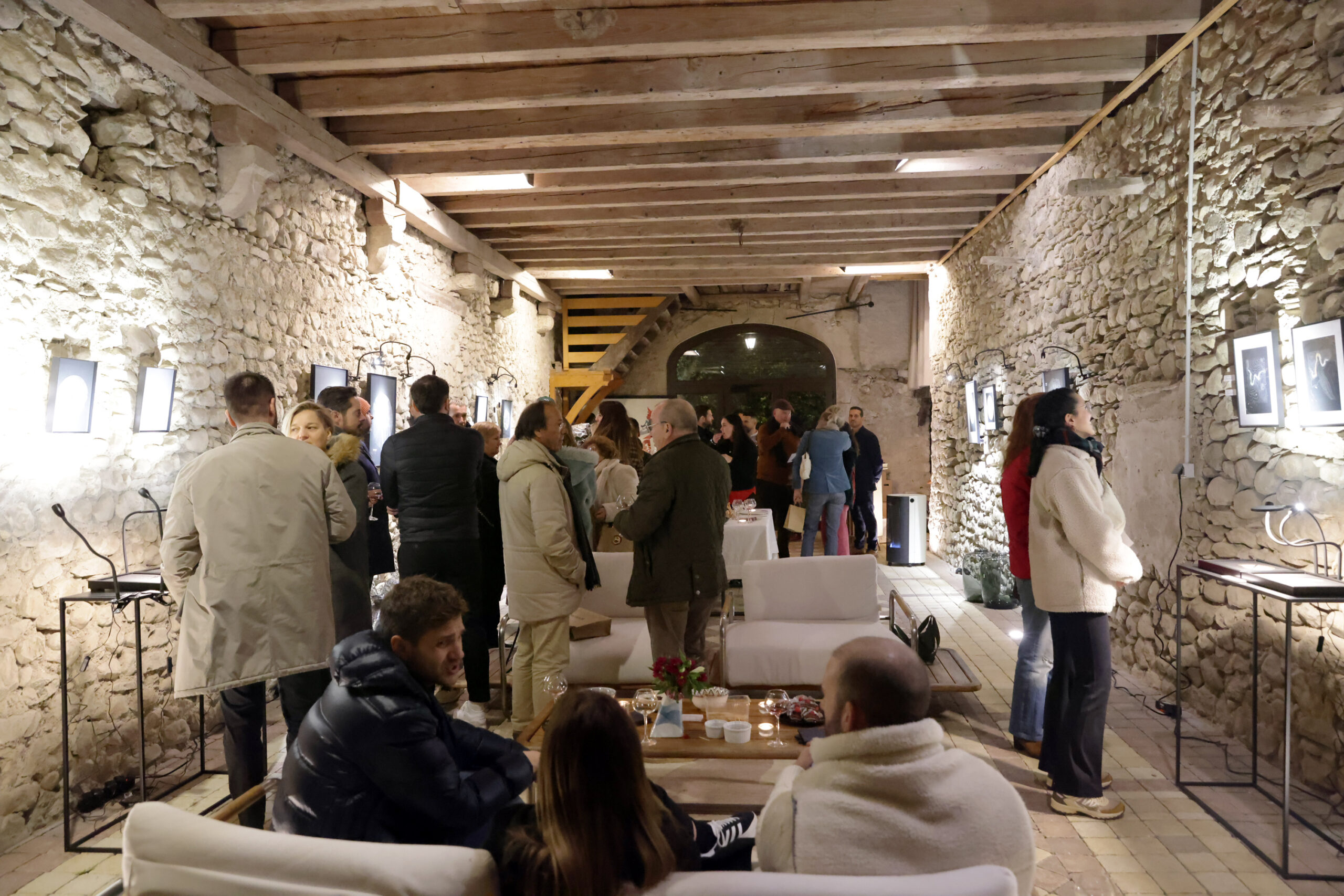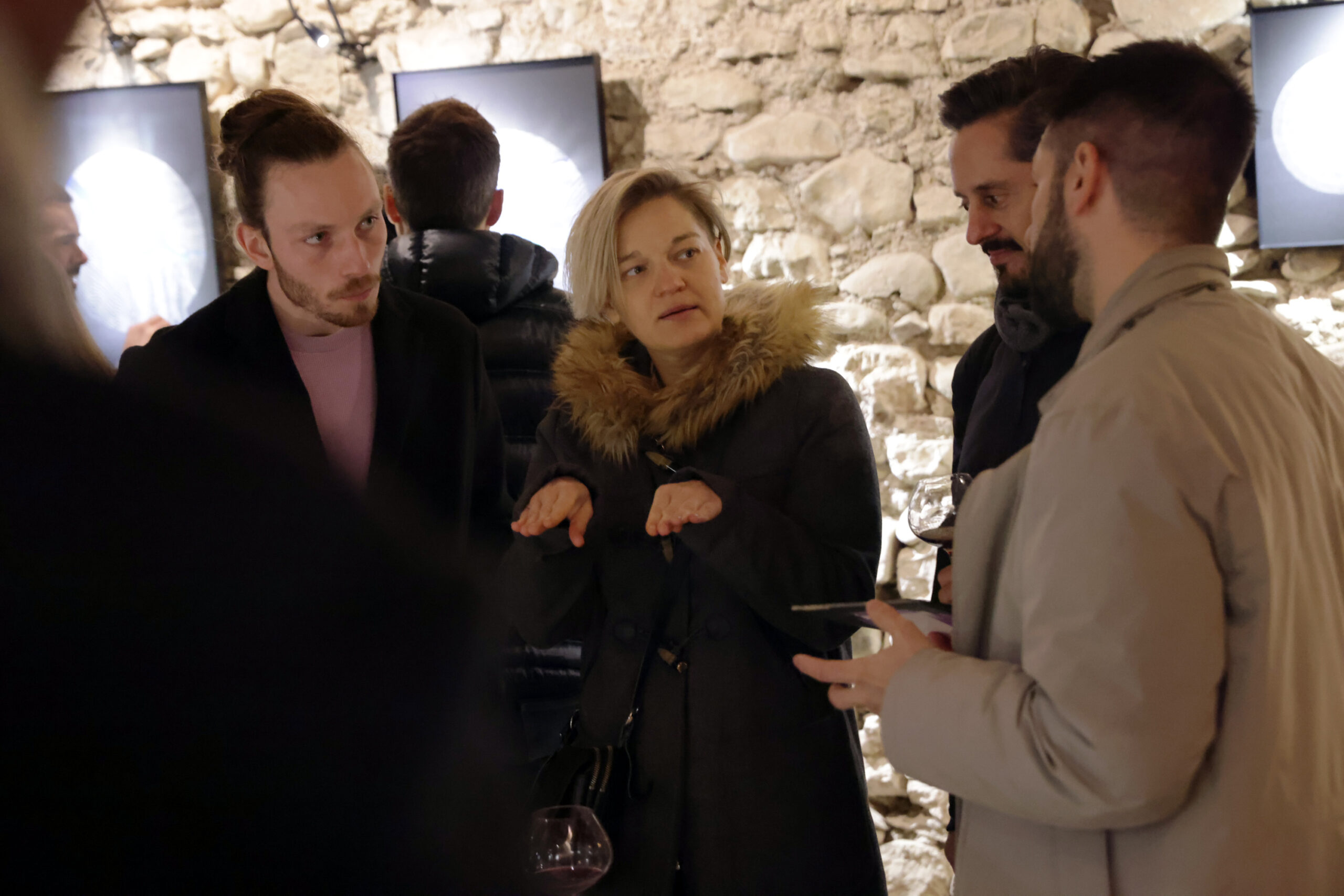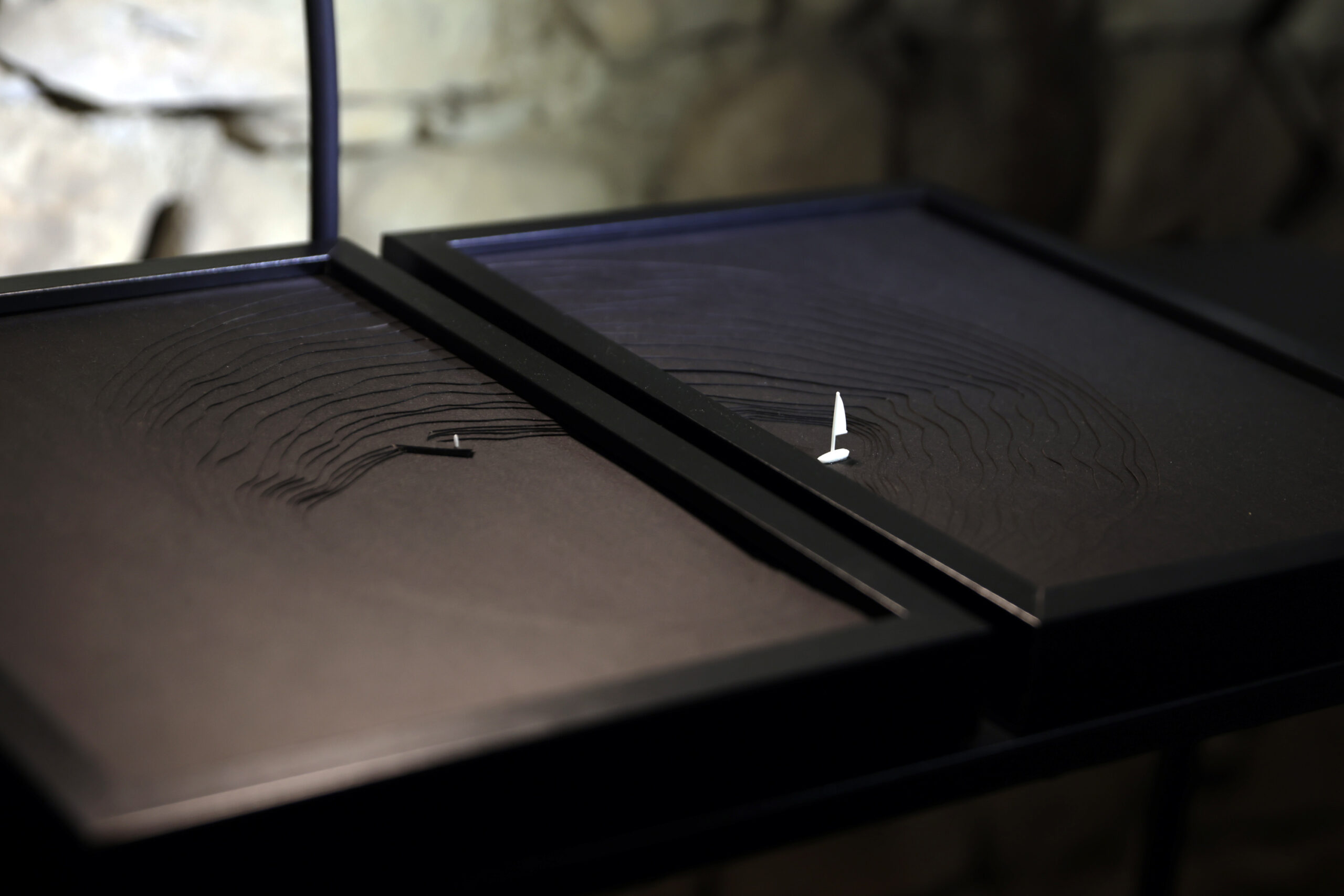
For our Artists’ Pop-up Studio, we’re thrilled to host Luis Marques, a Portuguese-born artist based in Geneva. His work explores a deep passion for drawing, enriched by his background in architecture. Fascinated by the dizzying morphology of the Alps, Marques became interested in graphically representing these mountainous landscapes. His need to create personal territories gives rise to lines that represent imagined places—private, subconscious landscapes where one can find rest.
In his series of drawings, titled The Silver Planets, Marques set himself the challenge of creating a continuous line of graphics, almost like a meditation. Each line, shaped by a previous thought, influences the next. This practice becomes a ritual of managing fullness and emptiness, controlling the pace and focus of each gesture.
Marques also explores the boundaries of sculpture with layered glued paper, balancing abstract and figurative elements to create imaginary topographies where human presence gradually recedes. A select number of these imagined maquettes are also featured in this exhibition.








About Luis Marques
Born in 1984, graduated in Architecture from the University of Porto (Portugal), Luis is based in Geneva (Switzerland) since 2011 where he works in the public sector, for the Département du territoire.
He started developing his artistic work based in his long-time love for drawing. Using mixed media (graphite, ink, watercolour, amongst others), he proposes a certain sort of imaginary topographies (most of them inhabited) that could be seen as subconscious, internal and personal places, with natural inspired rules.
At first, one might get lost in the textures and some hypnotic pattern, but looking closer, one gets fascinated by the change of perspective where natural environments (although simulated) emerge with a hint of familiarity that comes with recognizable landscape traces.
Some of those landscapes tent to evolve into something lighter as pleated fabric, creating atmospheres full of movement and delicacy even though they are created with rough media such as markers of diferent thicknesses.
He also explores the boundaries of sculpture with his paper cut assemblages, assessing notions of scale, rhythm and relief along with ideas of loneliness, isolation or the human impact on the landforms.


